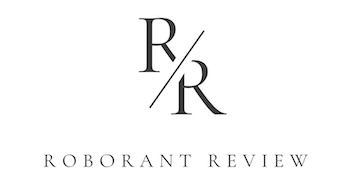Treasured Bearing, Katherine Tzu-Lan Mann, Dolby Chadwick Gallery
By Tamsin Smith
Do I contradict myself?
Very well then I contradict myself,
(I am large, I contain multitudes.)
-- Walt Whitman, Song of Myself 51
Human beings often aspire to a still point of harmony or balance. And yet… as Galileo Galilei muttered after Roman Inquisitors forced him to recant his assertion that the Earth revolved around the Sun…we move. We are messy, complicated, evolving creatures, never done with our layers. In this, we resemble Nature herself. Perhaps if we faced our mirrors with this in mind, we’d see the genius of adaptability as far more compelling than some idealized state of perfection.
These are the sensations that spill forth while facing Katherine Tzu-Lan Mann’s creations. They contain a richness that can’t be contained by pat labels or summary judgments. Are they paintings, collages, weavings, or installations? Yes, and. The work does not declare; it opens conversations and invites inquiry. Each has a bearing all its own; each holds treasures. These are visual meditations on innocence and experience.
Mann begins with a random spill of Sumi ink or, in some cases, a splash from the brush water left over from her last effort. Upon this first gesture, she enters a new environment, makes her marks, and builds a new world. The flourish echoes an infant’s first gasp as it expels amniotic fluid from its lungs to take its foremost breath of air. The steps that follow encompass the next stages of Mann’s process.
She draws, both literally and figuratively, by close observation. Trained in traditional Chinese painting techniques, Mann employs both calligraphic brushstrokes and ink wash with an exuberance that is in some ways more akin to the action painting of Jackson Pollock or the soak-stain color fields of Helen Frankenthaler. Her landscapes flow from plein air sessions in the countryside. And yet, in their final form, these assemblages feel more like the imaginative landscapes of Joan Mitchell.
Referencing both traditional virtuosos and the stars of Abstract Expressionism does a disservice to the wholly individual creativity and impact of these works, however. The base substrate for Mann’s work is paper, upon which elements are drawn, brushed, dropped, cut, and left subject to evaporation. The elements can be intricate leaves and flowers, or simple shapes and flourishes. Spheres and eyes enter the scene to function as windows, introducing a sense of distances that eschew Western modes of perspective. Rather than creating the illusion of depth through vanishing points, Mann achieves dimensionality kaleidoscopically.
Take, for example, Double Gui. A series of circles reverberates like a hall of mirrors. The detailed rendering of foliage against a sunset wash of orange-red at the top and subterranean black-green at the base suggests a forest. A scattering of diagonal lines evokes shafts of sunlight cutting through the jumble. A golden band at the top with pink beneath approximates an ocean horizon line. Flowers cross this maybe-sea like the glitter path as the reflected sun begins to set. The apex of a central pyriform shape offers the sensation that this entire illusion is contained within a single drop of water or tear.
Vincent Van Gogh was inspired by the flatness of Japanese prints and adopted their bold color swaths, details from nature, and fresh spatial effects in his own work. Mann, too, elevates the study of a blade of grass to prioritize feeling over “realism,” although her vivid, overlapping circles and radiant palette hew more closely to the energy of Orphism. Emotional immediacy takes center stage as the vital protagonist in her paintings.
Under the Fault Line bursts with tropical exuberance. Below the equator or fault line lies a quieter, more contemplative rhythm. It reads as an allegory or concerto with moments of soaring joy tempered by passages of deep melancholy. The presence of nature in all Mann’s work is itself a reminder of the ephemeral. Above springs a flush of novel growth unfurling, and below dwells the inevitability of decomposition and reintegration.
Dualism pervades the pieces. Mann's circles and repeating patterns give a sense of symmetry, as do the echoes of Rorschach test inkblots. But to say dualism is to limit the treasures that they hold and the bearings that they present to the world. The paintings breathe in more than two dimensions, more than two states of being. They expand into time and space multitudinously.
If 20th-century modernism was a reaction to the strictures of realism after the existential horrors of war, Mann offers us an alternate vision. What we encounter through Mann’s narratives is a set of novel possibilities. The search for a prevailing truth or reality has been nudged aside. Multiple perspectives collaborate not to memorialize a still point but to celebrate a vista.
Mann’s paintings are epic in size. Some are horizontal (as a traditional handscroll) or vertical (as a hanging scroll). The eye’s journey is continuous. They hold histories. They tell stories. Things fall apart, and yet, Mann’s centers hold.
Katherine Tzu-Lan Mann Treasured Bearing is on view from November 6–29, 2025, at Dolby Chadwick Gallery, San Francisco. Opening Reception: Thursday, November 6, 5:30–7:30 pm.






